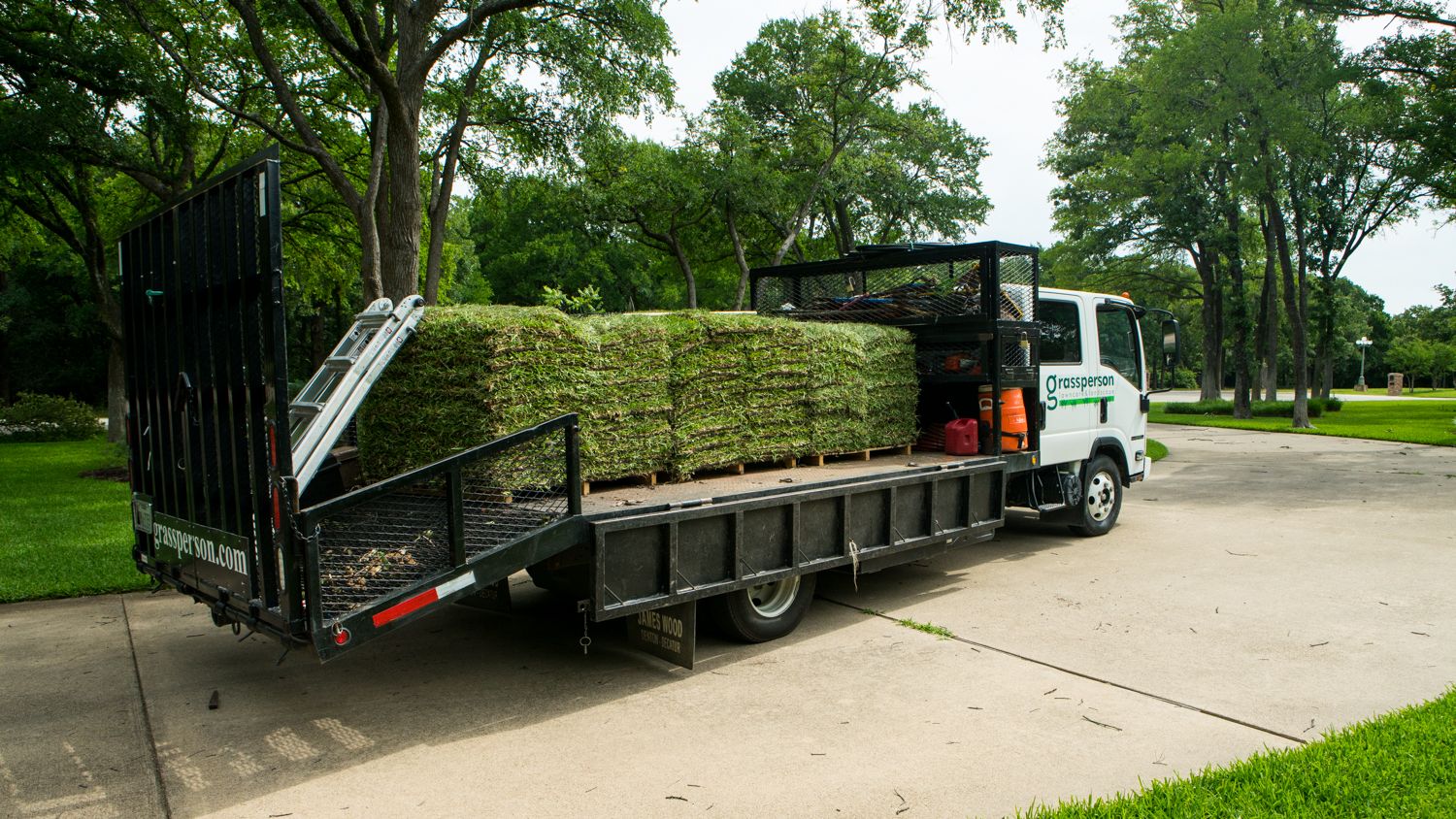
Having sod installed is an exciting endeavor. It means getting an instant lawn. But it’s also a substantial investment and you want to make sure that you’re caring for new sod properly. The last thing you want is to see your new sod dying because you didn’t take the right steps to ensure it became established.
That’s why we’ve put together this new sod care guide. We’ll walk you through everything that you need to know to ensure that you’re set up for success.
With these new sod care tips, you’ll get off on the best foot possible and soon be enjoying your lawn to the absolute fullest.
When it comes to new sod care in North Texas, proper watering is by far the most important step. Because of our hot and dry climate, your new sod can start to dry out and the roots begin to shrivel before they become established.
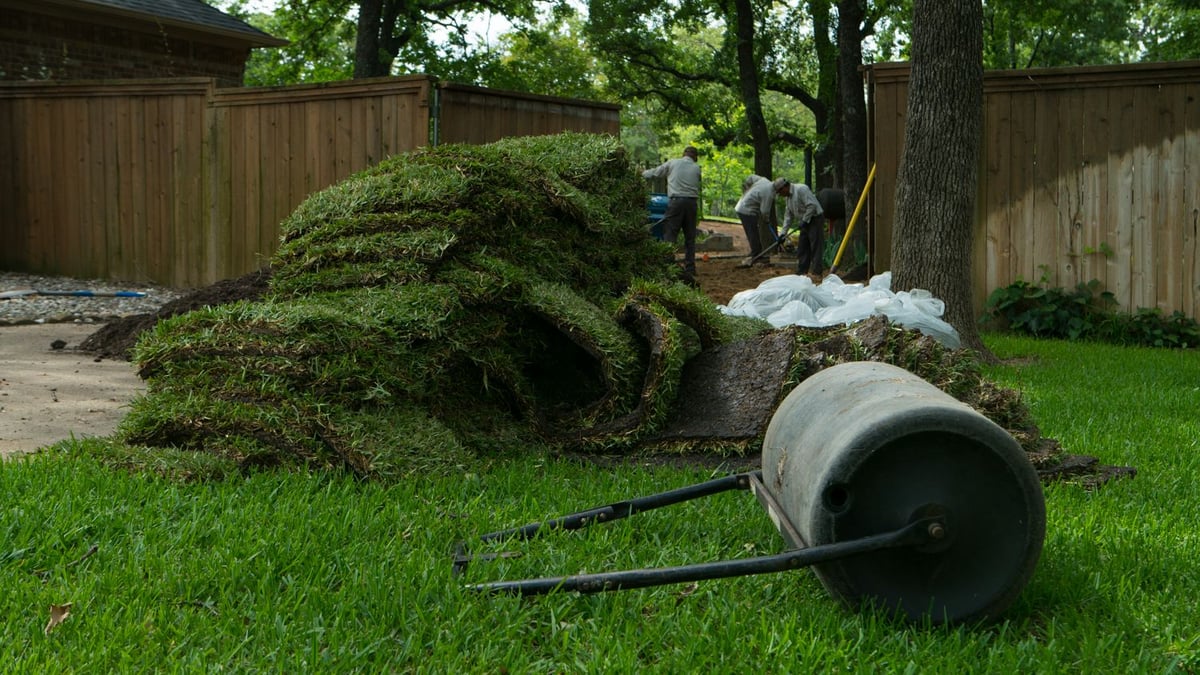
During the active growing season, sod is going to need a lot of water. That’s one argument for installing sod in the fall when it will soon be going dormant and won’t need to be watered constantly or deal with the stress of spring or summer heat.
Still, we know that a lot of people want a new lawn in the spring when they’re spending a lot more time outside, so we’re sharing watering recommendations for the growing season.
Let’s look at the specifics involved in watering.
The exact recommendations for how often to water new sod will depend on the type of irrigation setup that you have in that area. Spray heads put out more water whereas rotors shoot water further but their per-square-foot coverage per minute is less.
If you have spray heads in the area of your new sod, we would recommend 6 to 10 minutes of watering per day broken down into 2 segments: 3 to 5 minutes in the morning and 3 to 5 minutes in the early evening. We would recommend doing this for 14 days.
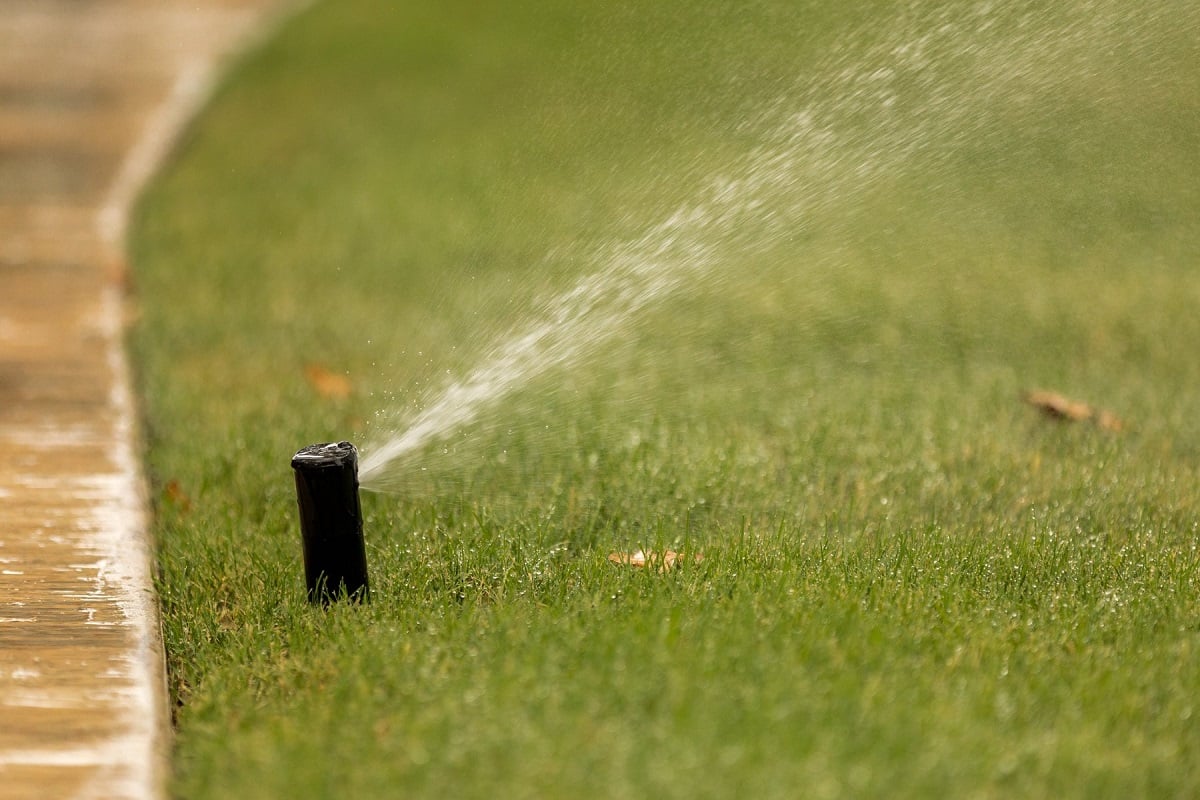
If you have rotor heads in that area, we would advise that you water new sod 8 to 10 minutes per day broken down into 2 segments: 4 to 6 minutes in the morning and 4 to 6 minutes in the evening.
After the first 2 weeks of watering your sod every day, you can cut back to doing it 3 to 4 days a week. The idea is to start with a lot of water and then taper off as the roots are becoming established. If the roots are established, you’ll eventually set it and leave it for good. It’s usually around the 30- to 60-day mark that you’re dialing it in and setting it for good. The goal is to get around one inch of water from your irrigation system per week.
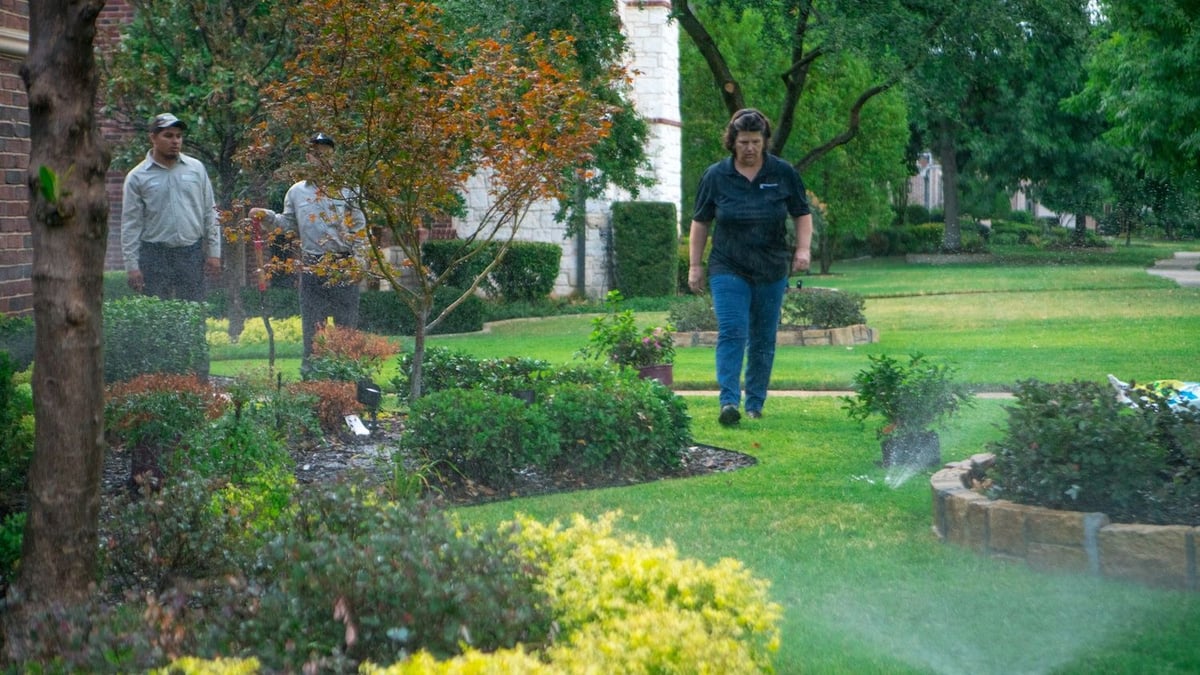
Grassperson can offer irrigation checks as part of your sod installation. We would send a licensed irrigator out ahead of the sod installation to verify that your irrigation system is working properly and that you’ll have good coverage for your new sod. If there are any issues, we’d make adjustments like adding heads or extending lines to ensure that you have optimal coverage for your new sod. We’d then set the controller to the watering times (as recommended above).
If homeowners choose not to have us involved in the irrigation at all, we do have them sign off that they are assuming the risk. Having a pre-inspection ahead of sod installation is really the best way to prevent problems.
When can you mow new sod? It is our recommendation not to mow new sod for 3 to 4 weeks following installation. This is the most critical time for the sod to become established and you don’t want to put any extra stress on it. That even includes yard usage.
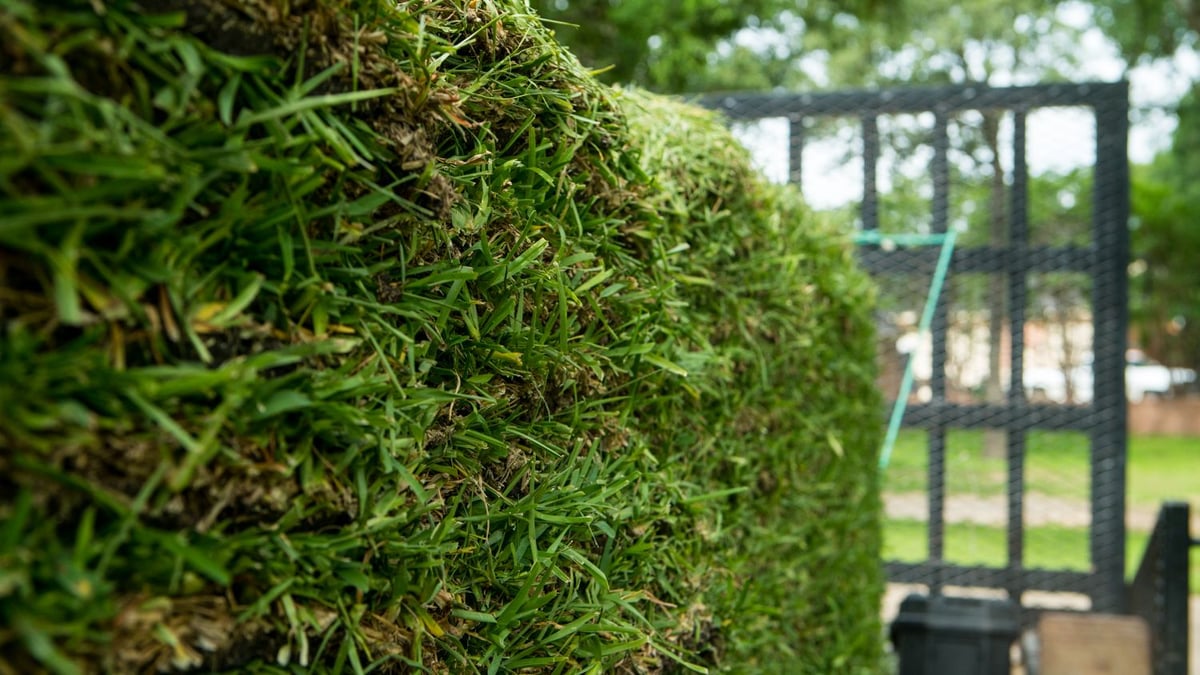
You wouldn’t want kids playing soccer or pets running on the sod during that initial period of establishment. Sod is expensive and you want to do everything you can to nurture it as it becomes established.
After waiting 3 to 4 weeks to mow your new sod, we recommend that you go easy on the grass and cut it high for a while. Instead of cutting it around 3 inches high, we’d advise 3.5 for a while. The idea is that we’re trying to promote overall health and not only encourage top growth but root growth, too. Mowing the lawn does put stress on it, so we want to minimize that as much as possible and encourage growth.
When it comes to any treatments on your new sod, you want to be incredibly careful. That might mean dealing with some weeds for the time being.
For instance, because the new sod is receiving frequent watering, it’s often inevitable that some nutsedge is going to end up growing. However, you would want to wait 60 to 90 days before applying any weed control treatments. It’s just not worth the risk of damaging your new sod in any way. It really is still fragile at this stage.
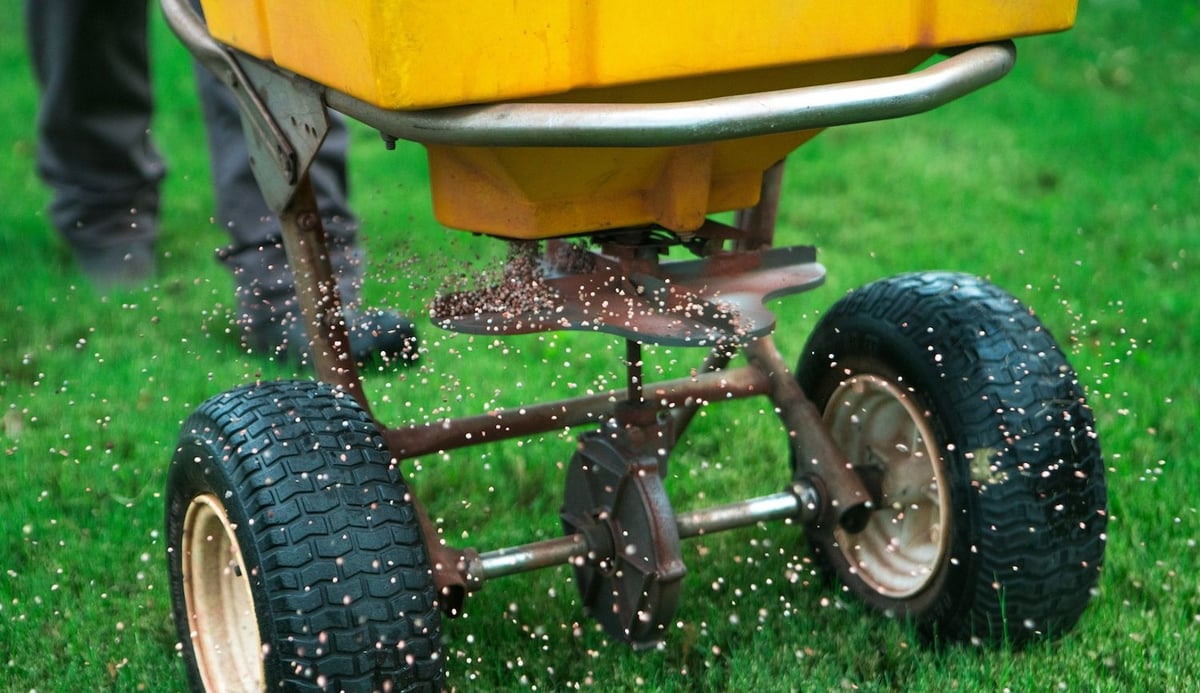
Should you fertilize new sod? Yes, you should fertilize new sod, but timing and product selection are key to ensuring healthy establishment. At Grassperson, our standard flat-rate pricing for sod installation includes a high-quality starter fertilizer applied on the day of installation. This initial fertilization provides essential nutrients to support root development and help the sod establish more quickly. However, it’s crucial to use a low-nitrogen fertilizer at this stage to prevent excessive top growth and avoid the risk of burning the grass. Instead, a balanced fertilizer with phosphorus and potassium will encourage strong root formation, which is essential for long-term lawn health.
After the first few weeks, a follow-up fertilization plan can further support growth, but it’s best to consult a lawn care professional to determine the right schedule and products based on your specific sod type and soil conditions.
At the end of the day, the best advice that we can offer when it comes to caring for new sod is just to keep a watchful eye as it becomes established. If something seems amiss, it’s worth giving your professional a call.
The goal, of course, is for the new sod to take root. If you want to understand whether your new sod is rooted in, lightly pull up on an edge. If you have some resistance, it is taking root. If there is no resistance at all and it’s pulling up, something may be wrong (particularly if it’s been a few weeks already).

It can be easy to lose track of time and let days go by without checking on your new sod. But in the early stages, it really is critical. For the investment that you’ve made, you want to make sure that your sod is becoming established and not suffering from any problems that could be detrimental.
We often tell homeowners that it does take some patience.
Sod is coming into your yard in these large rolls and we’re piecing it together, much like a patchwork quilt. In doing so, we’re trying to force edges together and sometimes there is a little pullback at the edge zone. That’s natural. But you do need to give it some time. Just like a cut that eventually turns into a scar (and one day isn’t even noticeable anymore), you need to let the roots take hold and the edges mend together.
With some patience and with the right new sod care, you’ll soon have the lawn you’ve been dreaming of.
Ready to have sod installed and get a beautiful new lawn at your Flower Mound, Highland Village, or Lewisville, TX home? Get a free quote and then enjoy the best lawn with no worries!
These Stories on Lawn Care